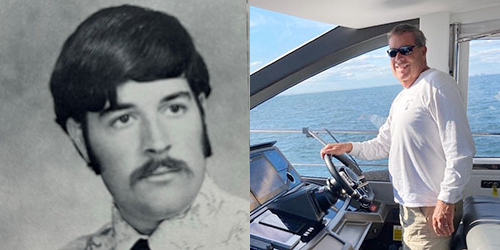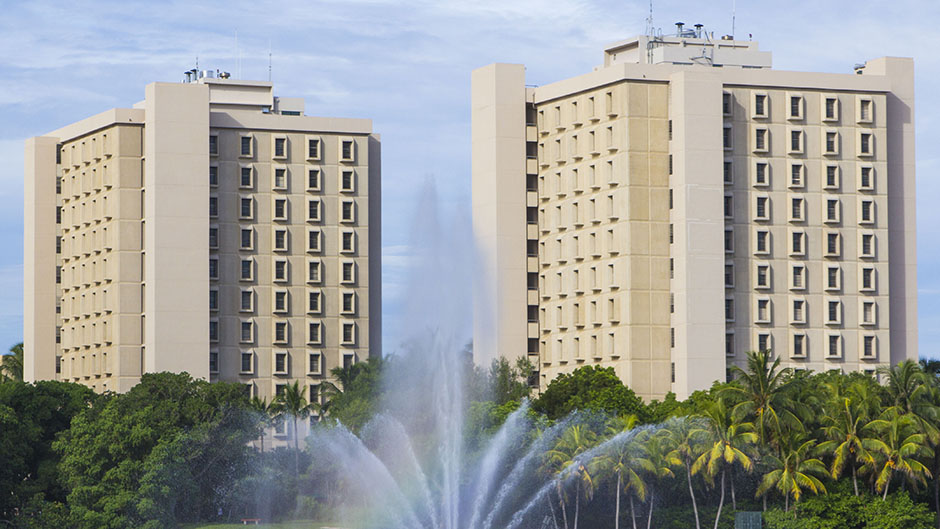When Stanford Residential College closed for the final time earlier this summer, generations of ’Canes recalled a place where they made lifelong friends as they navigated the transition to student life. Among them is David Bergen, B.S. ’78, who reflected that his and his friends’ time in Stanford “changed our lives forever.”
Bergen retired in 2019 from a 39-year career in higher education administration that included associate dean or dean of students positions at Fairleigh Dickinson University and Gonzaga University and culminated in 19 years as dean at Suffolk County Community College on New York’s Long Island. He shared his memories of Stanford—which at the time was called 960 Complex, for the 960 students it housed—and how the community he found there influenced his life and career trajectories:
I transferred to the U after attending a community college for two years. I loaded up my car one hot summer day, driving over 1,300 miles to Miami, having never set foot on the campus. I pulled into the campus, winding my way through small apartment buildings and heading for the four tallest buildings on the horizon.
I checked into 960 North [later known as the Walsh Tower] with a suitcase and a few boxes of belongings, feeling like a fish out of water. This began a three-year residency, which changed my life forever.

I quickly became involved in 960 government. In my second semester, I applied to be a resident assistant and was hired. Returning in August, I was greeted by Randy and Jeff, my graduate assistants, who were also new to their positions. I embarked on what became a two-year appointment as an RA.
While my residential experience greatly supported my academic success at the U, it was the many social interactions that dramatically boosted my personal growth, welcoming me to a large, diverse, and ever-changing world that I would never have experienced in my small hometown. I learned to listen and learn from others, absorbing growth experiences that molded my career path.
There were many fun experiences along the way as well. I recall inviting Dean [William] Sandler to join my floor for a dinner at a local restaurant (Beefsteak Charlie’s) where the residents toasted the dean, and he, of course, toasted the guys. Dean Sandler wrote me a note thanking me for allowing him to join a rowdy group of guys for an off-campus dining experience.
During my second year, I took it upon myself to walk into President [Henry King] Stanford’s office, inviting him to attend a floor meeting to share with the residents what a typical day is for the president. He, of course, said yes, and we booked an evening.
Well, I had not informed anyone up the chain of command so, of course, a day prior to the event, President Stanford mentioned to [Vice President for Student Affairs William] Butler his pending visit to 960 11 North floor. This led to an immediate call from V.P. Butler to the director of residence life, leading to an immediate call to the resident director of 960, who immediately left me a note to see her ASAP. I quickly learned the phrase “going through channels” in a conversation that stayed with me for a very long time.
I recall participating in midnight breakfast during finals week, standing on the serving line with President Stanford, dishing out food, and enjoying a cold beer with him and others at the end of the event. This experience taught me to appreciate the level of dedication to students shown by administrators. I carried this teachable moment with me, introducing midnight breakfast to other universities.
During my career in student affairs, I took advantage of other life-learning opportunities, including coordinating training camp for the New York Football Giants for three seasons, including the 1991 Super Bowl season. Fellow 960 11 North resident O.J. Anderson [B.S.Ed. ’79] earned most valuable player honors for his performance in that Super Bowl.
While my academic experiences influenced my life’s journey, it was what we referred to as ‘the other side of education’ experiences acquired while living in 960 that molded that journey forever. And those two GAs who came knocking on my door in August 1976? They became my brothers for life.
I have been retired now for five years, giving back to my community through many volunteer positions and serving in different elected positions. I still enjoy reading about the U in alumni publications, and, of course, following Hurricane football. So, thank you 960 Complex! Without you and all of the experiences that occurred within your walls, I am not sure how my life would have turned out.

